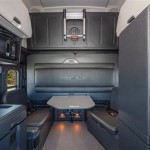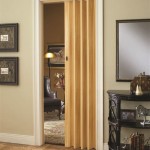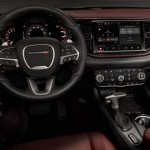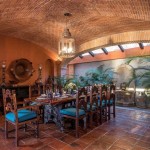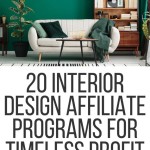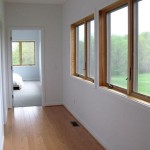Interior Design Presentation Boards: A Visual Guide to Your Vision
Interior design presentation boards, also known as mood boards or design boards, are powerful tools used by designers to communicate their vision for a space. These visual aids showcase the aesthetic, functional, and thematic elements of a project, allowing clients to visualize the end result before any work begins. From color palettes and furniture selections to materials and lighting choices, presentation boards effectively summarize the designer's concept and demonstrate how different elements will cohere within the space.
Beyond serving as a communication tool, presentation boards are valuable for designers themselves. They can act as a visual reference point throughout the design process, ensuring consistency and cohesiveness in the final project. The act of creating a presentation board also helps designers refine their ideas and explore different possibilities, ultimately leading to a more comprehensive and well-considered design.
Key Elements of a Presentation Design Board
A well-crafted interior design presentation board should include several key elements, each contributing to a clear and compelling visual narrative:
1. Color Palette
The color palette is a fundamental aspect of any design project. On the presentation board, this is often represented through swatches of fabric, paint samples, or digital color palettes. The choice of colors should reflect the desired mood and atmosphere of the space, as well as the overall design style. A clear and well-defined color palette provides a foundation for subsequent design selections.
2. Materials & Finishes
Materials and finishes play a crucial role in shaping the character and feel of a space. These elements can be visually represented on the presentation board through samples of flooring, countertops, wall coverings, and other materials. The selection of materials should be informed by factors like durability, aesthetic appeal, and budget considerations.
3. Furniture & Accessories
Furniture and accessories are the key elements that bring a space to life. The presentation board should showcase these elements in a way that reflects the proposed layout and design style. This can be achieved through photographs, sketches, or even actual samples of furniture pieces and accessories.
4. Lighting & Fixtures
Lighting significantly impacts the atmosphere and functionality of a space. The presentation board should incorporate representations of chosen light fixtures, such as pendant lights, sconces, and recessed lighting. It should also illustrate the intended lighting scheme, considering both natural and artificial light sources.
5. Images & Inspiration
Inspirational images and references can enhance the clarity and persuasiveness of a presentation board. These images could include photographs of similar spaces, architectural details, or artwork that aligns with the overall design concept. They serve as visual cues to demonstrate the designer's aesthetic and create a visual dialogue with the client.
Types of Interior Design Presentation Boards
While the core elements remain consistent, different presentation board formats can be employed depending on the specific needs of the project and the designer's preferences. Some common types of presentation boards include:
1. Physical Boards
Physical boards are traditional and often preferred for their tangible nature. These boards can be made using foam core, cork boards, or even large canvases. They provide a flexible canvas for incorporating actual samples, sketches, and printed images. Physical boards allow for a more immersive and tactile experience, facilitating client engagement.
2. Digital Boards
Digital presentation boards leverage software like Canva, Adobe Photoshop, or InDesign to create visually compelling presentations. These boards offer greater flexibility for editing, sharing, and presenting remotely. They also allow for dynamic elements such as animations, transitions, and interactive features, enhancing the visual appeal and engagement factor.
3. Hybrid Boards
Hybrid boards combine aspects of physical and digital presentation boards. This approach might involve using a physical board as a foundation for incorporating digital elements like interactive images or videos. Hybrid boards leverage the tactile experience of physical boards while capitalizing on the dynamic capabilities of digital platforms.
Tips for Creating Effective Presentation Boards
Creating a successful interior design presentation board requires careful planning and attention to detail. Here are some tips to guide the process:
1. Define the Project Scope
Before starting, clearly define the project scope, including the target audience, desired style, and budget limitations. A clear understanding of the project goals will inform the design decisions and ensure the presentation board effectively communicates the vision.
2. Research and Gather Inspiration
Thorough research plays a crucial role in creating a compelling presentation board. Explore existing projects, design blogs, and architectural publications to gather inspiration and identify potential elements that resonate with the design vision.
3. Create a Layout and Structure
Plan the layout and structure of the presentation board for optimal visual flow. Consider grouping related elements together, using color and texture to create visual interest, and allowing for sufficient space to showcase each element clearly.
4. Choose High-Quality Materials
Select high-quality materials for the presentation board to create a professional and impactful visual experience. Use high-resolution images, accurate color swatches, and durable samples that represent the chosen materials and finishes accurately.
5. Present with Confidence
When presenting the board to the client, be prepared to discuss each element in detail and answer any questions. Emphasize the rationale behind design choices and highlight the unique aspects of the project. Confidence in the presentation will instill trust and foster a productive dialogue with the client.

Interior Design Presentation Board

How To Present A Client S Interior Design Mood Board The Kuotes Blog

Interior Design Presentation Boards Google Search

Design Presentation Boards Designteacher

How To Create A Winning Interior Design Presentation

Interior Design Presentation Boards Tsymbals

Interior Design Finish Presentation Boards Google Search

Interior Design Presentations The Secret To Winning More Clients

How To Create A Winning Interior Design Presentation

Presentation Boards By Hope Wortham At Coroflot Com


